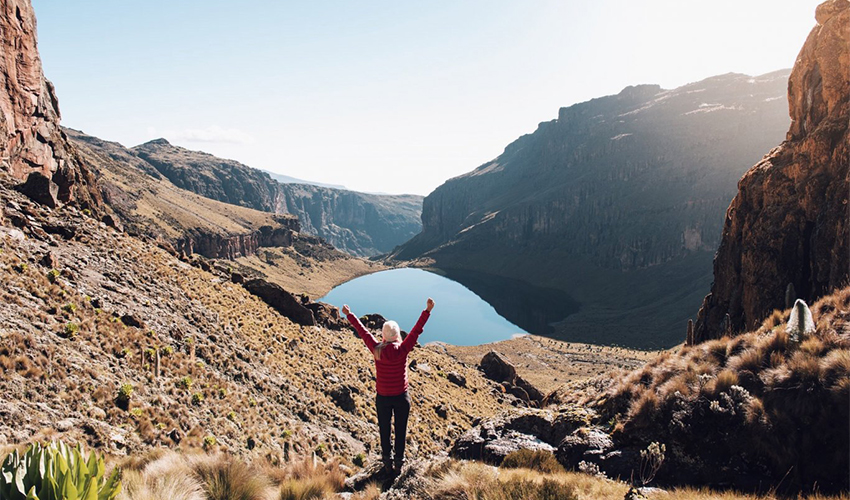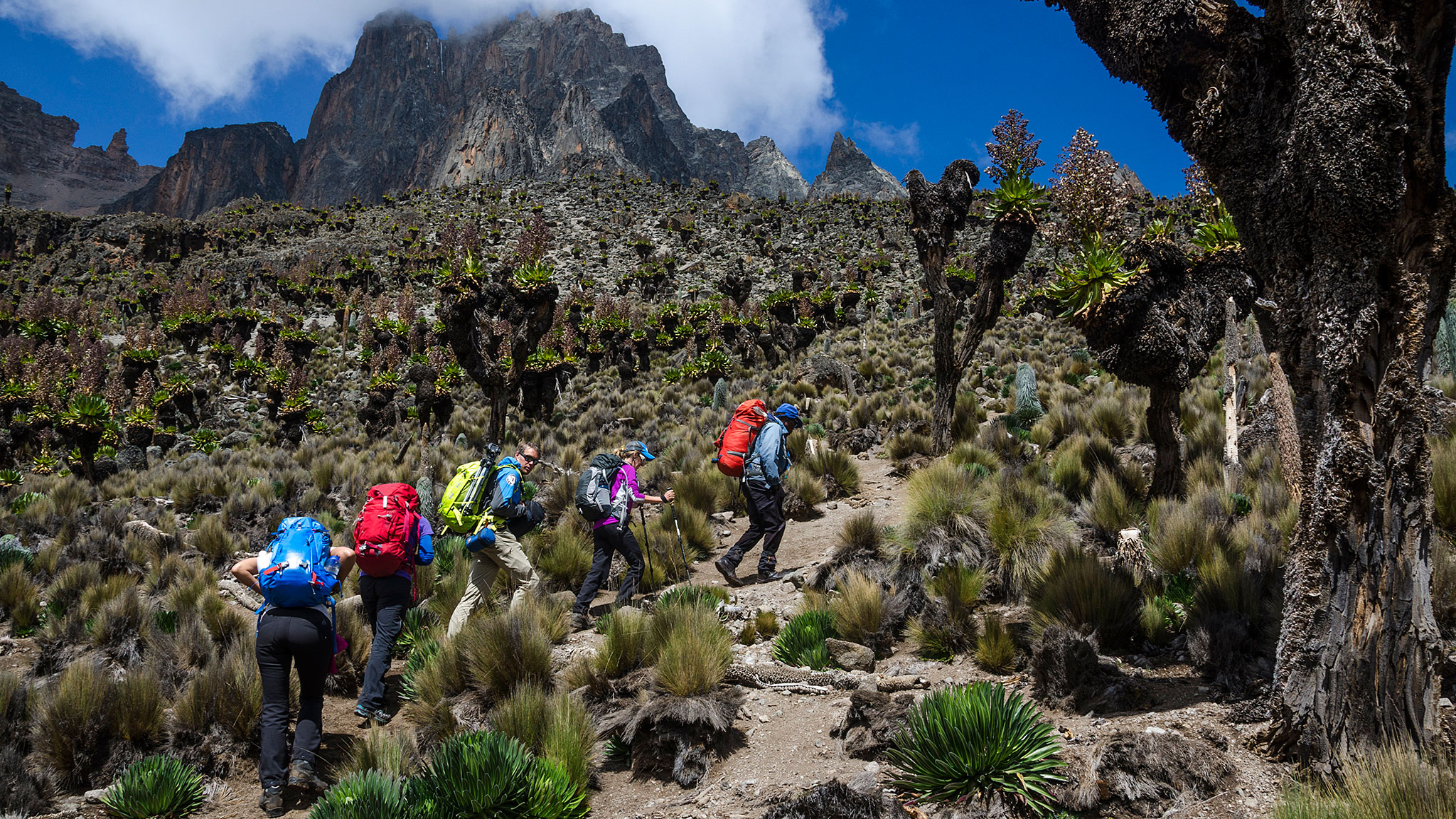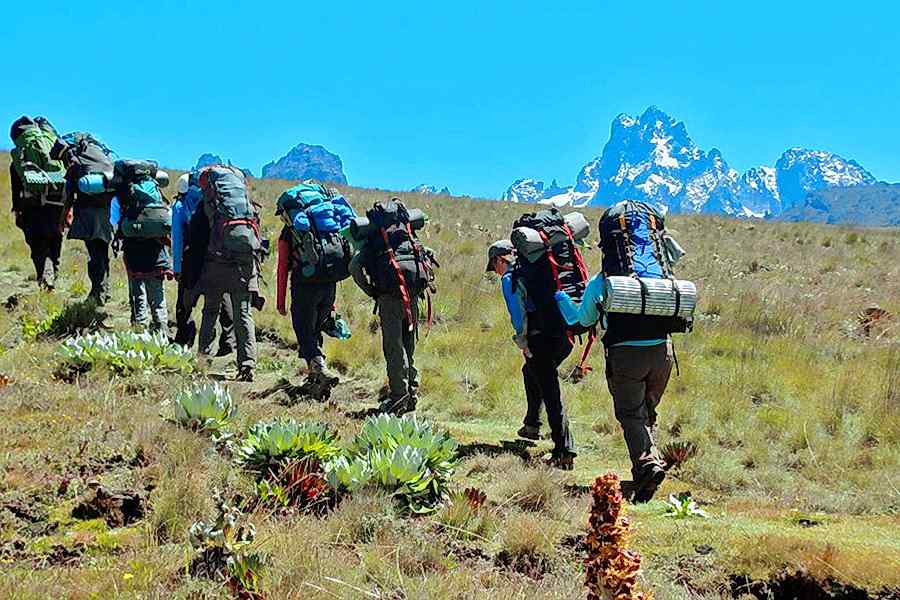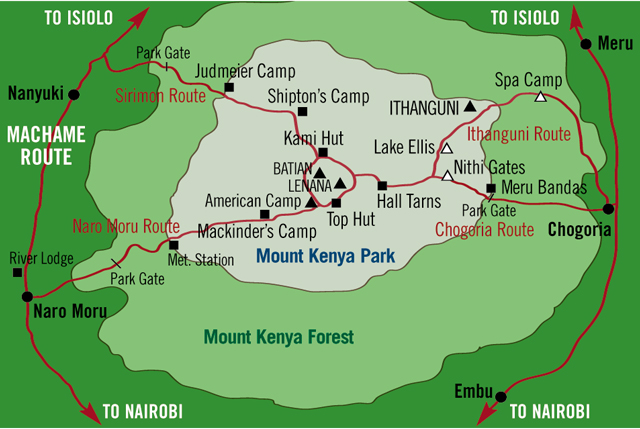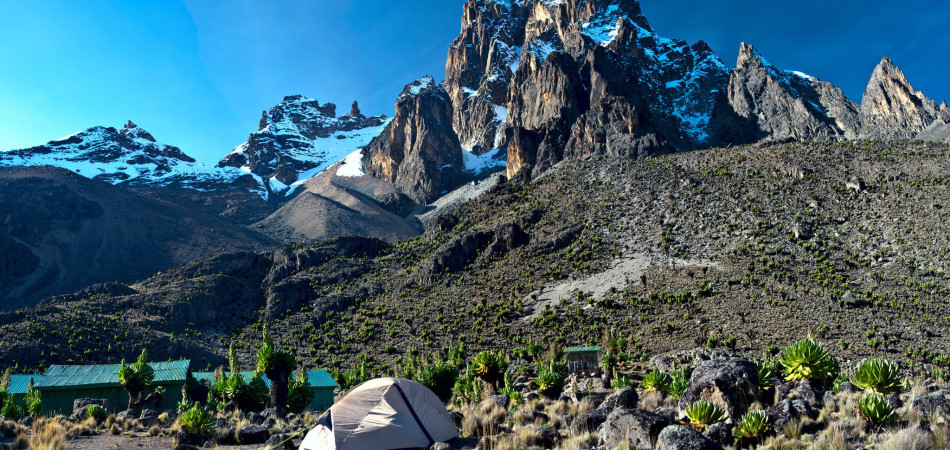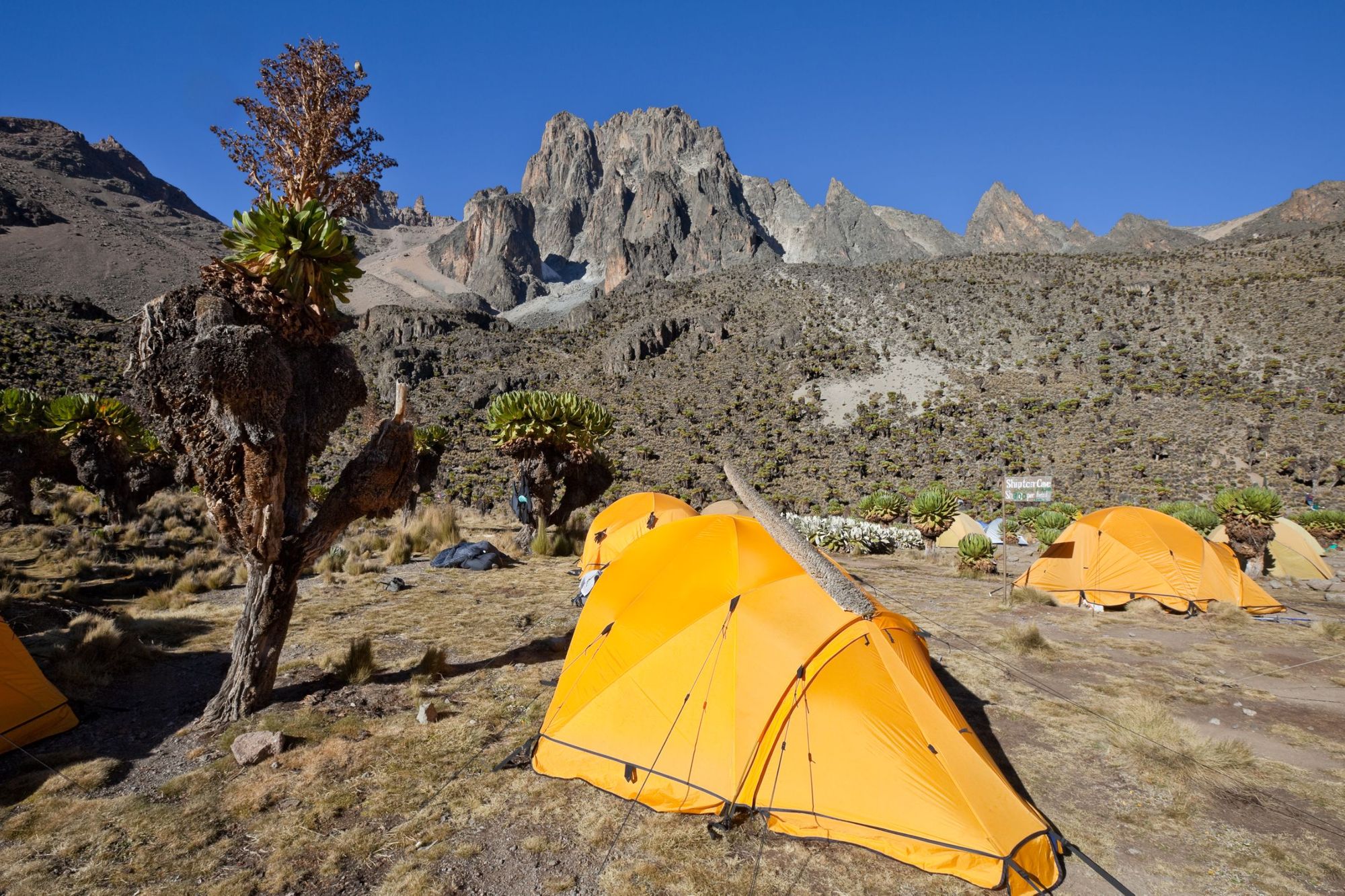Discover the Beauty of Mount Kenya
Embark on the Mount Kenya Sirimon Chogoria Trek, a four-day journey through one of Africa’s most remarkable mountain landscapes. Mount Kenya, Africa’s second-highest peak, combines rugged beauty, snow-capped peaks, and vibrant wildlife. The trek offers an exciting blend of adventure, nature, and culture, making it ideal for both beginners and experienced hikers.
This route begins on the scenic Sirimon Trail, known for its gradual climb and beautiful forested paths. As you ascend, you’ll pass through lush bamboo forests, crystal-clear streams, and rolling moorlands. Soon after, the scenery transforms into alpine meadows dotted with giant lobelias and senecios. Finally, you’ll approach the rocky peaks and glaciers that crown Mount Kenya, revealing views that stretch far beyond the horizon.
Expertly Guided by White Horse Safaris
At White Horse Safaris, we organize safe, comfortable, and well-paced treks on the Mount Kenya Sirimon Chogoria Route. Our professional guides, porters, and cooks ensure that every trekker enjoys a smooth and memorable experience. Moreover, we handle all logistics — from permits to meals — allowing you to focus entirely on the climb.
Because acclimatization is essential for success, our route is carefully designed to help your body adjust gradually. Each day brings new scenery and challenges, but our guides are always nearby to offer support and motivation. Additionally, we provide delicious hot meals and comfortable camps that overlook Mount Kenya’s dramatic ridges and valleys.
Why Choose the Sirimon–Chogoria Trek
The Sirimon–Chogoria Trek is one of the most rewarding ways to explore Mount Kenya. On the way up, the Sirimon side offers calm, scenic trails with excellent wildlife viewing. On descent, the Chogoria side reveals lush valleys, waterfalls, and panoramic views of Gorges Valley. Consequently, you get to experience two completely different ecosystems within a single trek.
Beyond the adventure, this route offers a chance to connect with nature and local culture. You may spot colobus monkeys, rock hyraxes, or sunbirds along the way. More importantly, reaching Point Lenana at sunrise is an unforgettable moment — one that symbolizes endurance and discovery.
Explore more hiking adventures on our Kenya Safari Packages.

